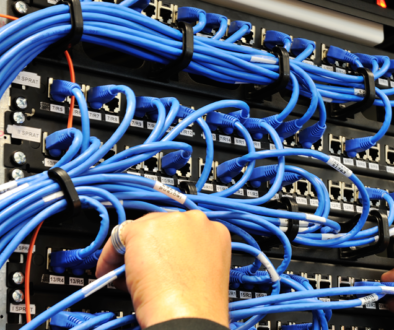Network Transformation: The Shift from WAN to SD-WAN
In today’s fast-paced digital landscape, where businesses rely heavily on connectivity and data transmission, the evolution of network infrastructure has become a paramount concern. Traditional Wide Area Networks (WANs) are no longer sufficient to meet the demands of modern enterprises. This article delves into the revolutionary transformation from WAN to Software-Defined Wide Area Network (SD-WAN), exploring the key differences between the two and the underlying SD-WAN architecture.
Introduction
The network is the backbone of any organization’s operations, enabling seamless communication, data sharing, and access to cloud-based resources. WANs have long been the go-to solution for interconnecting geographically dispersed branch offices and data centers. However, the advent of SD-WAN technology has redefined the way businesses approach network connectivity and management.
The WAN vs. SD-WAN Battle
The major difference between SD-WAN and WAN is as follow:
WAN: An Overview
Traditional WANs rely on dedicated hardware and static configurations. They connect remote locations by establishing point-to-point connections or using MPLS (Multiprotocol Label Switching) circuits. While WANs have been reliable, they come with certain limitations:
- Cost: Setting up and maintaining WANs can be expensive due to the need for specialized hardware and leased lines.
- Complexity: WAN configurations can be complex, making it challenging to adapt to changing business requirements swiftly.
- Limited Agility: Traditional WANs lack the flexibility needed to support the dynamic needs of modern businesses, particularly those embracing cloud services.
SD-WAN: A Game Changer
SD-WAN, on the other hand, represents a significant shift in network architecture. It leverages software-defined principles to overcome the limitations of traditional WANs. Here are the key differentiators:
- Cost-Effective: SD-WAN solutions often rely on cost-effective internet connections, reducing expenses associated with dedicated lines. This cost-effectiveness is particularly beneficial for small and medium-sized enterprises looking to optimize their IT budgets.
- Dynamic Routing: SD-WAN can dynamically route traffic based on real-time conditions, optimizing the use of available bandwidth and improving performance. This dynamic routing ensures that critical applications receive the necessary resources, even during peak usage times.
- Centralized Management: SD-WAN provides centralized control and visibility over the entire network, making it easier to manage and troubleshoot. IT administrators can set policies, monitor network performance, and make real-time adjustments from a single management interface, regardless of the geographical location of network endpoints.
- Security: SD-WAN incorporates robust security features, such as encryption and threat detection, ensuring data remains secure in transit. This security is essential in an era where cybersecurity threats are constantly evolving, and data breaches can have severe consequences.
- Cloud Integration: SD-WAN seamlessly integrates with cloud services, allowing businesses to take full advantage of cloud-based applications. As organizations increasingly migrate their applications and data to the cloud, SD-WAN’s ability to optimize connectivity to cloud resources becomes invaluable.
SD-WAN Architecture
Understanding the architecture of SD-WAN is crucial to grasp its transformative power. SD-WAN architecture consists of several key components:
- Edge Devices: These are the SD-WAN appliances or software endpoints installed at branch offices or remote locations. They establish connections with other edge devices and are responsible for routing and optimizing traffic. Edge devices can be physical appliances, virtual appliances, or cloud-based instances, providing flexibility in deployment options.
- Controller: The controller serves as the brain of the SD-WAN network. It centralizes management and orchestration, enabling administrators to configure policies, monitor performance, and make real-time adjustments. The controller’s intelligence allows for dynamic traffic steering, ensuring optimal application performance.
- Transport Options: SD-WAN can utilize various transport options, including broadband internet, 4G/5G, and MPLS, ensuring flexibility and cost-efficiency. By leveraging multiple transport paths, SD-WAN can intelligently route traffic based on performance metrics and business priorities.
- Cloud Gateway: SD-WAN often includes cloud gateways to optimize traffic bound for cloud applications. These gateways can direct traffic to the closest cloud service for improved performance, reducing latency and enhancing user experiences for cloud-based applications.
- Security Features: SD-WAN incorporates security measures such as encryption, firewall, and intrusion detection to safeguard data. These security features are critical in ensuring data privacy and compliance with regulatory requirements.
FAQs – frequently asked questions
1. What is the fundamental difference between WAN and SD-WAN?
Answer: The fundamental difference lies in their approach to network connectivity. WANs rely on dedicated hardware and static configurations, while SD-WAN leverages software-defined principles for dynamic routing, cost-efficiency, and centralized management. SD-WAN offers greater agility, cost savings, and improved performance compared to traditional WANs.
2. Is SD-WAN suitable for all types of businesses?
Answer: Yes, SD-WAN is suitable for a wide range of businesses, from small enterprises to large corporations. Its flexibility and scalability make it adaptable to various network requirements. However, the specific benefits and deployment considerations may vary based on the organization’s size, industry, and network infrastructure.
3. Can SD-WAN improve network security?
Answer: Yes, SD-WAN enhances network security through features like encryption, firewall, and threat detection. It ensures data remains secure while in transit, reducing the risk of data breaches and cyberattacks. Moreover, the centralized management and visibility provided by SD-WAN enable quick threat detection and response.
4. Is MPLS still relevant with the emergence of SD-WAN?
Answer: MPLS is still relevant for certain applications, but SD-WAN offers cost-effective alternatives that can replace or augment MPLS connections, depending on the specific needs of the organization. Many businesses are transitioning away from MPLS in favor of SD-WAN due to cost savings, improved performance, and greater flexibility.
Conclusion
The transition from traditional WAN to SD-WAN represents a monumental shift in network architecture. SD-WAN’s ability to deliver cost-effective, agile, and secure connectivity has made it a critical component for modern businesses. By understanding the differences between WAN and SD-WAN and delving into the architecture of SD-WAN, organizations can make informed decisions to propel their network infrastructure into the future.
Also Read – techndiary


